Author: Saint Louis Zoo Conservation Audience Research and Evaluation Associate Erin Tate
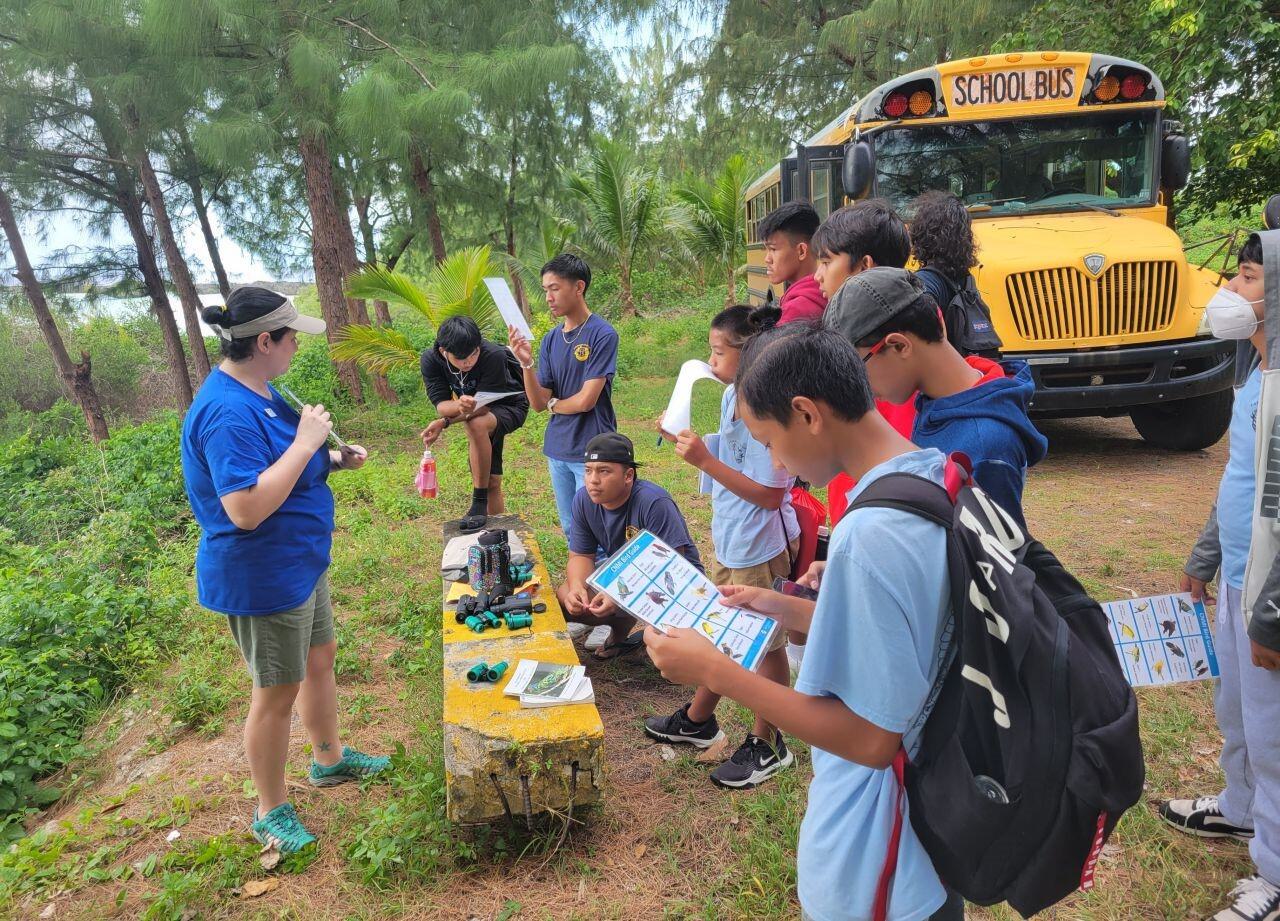
Each spring, a coalition of animal care experts, veterinarians, veterinarian technicians, and educators from AZA accredited zoos across North America make the roughly 30-hour trip to the Commonwealth of the Northern Mariana Islands (CNMI) in the Pacific Ocean to participate in the Mariana Avifauna Conservation project (MAC). This coalition is facilitated by Pacific Bird Conservation, and it is the combined effort of this partner organization and dedicated conservationists working on behalf of their home institutions that carry out this impactful CNMI Division of Fish and Wildlife project.
While there are 14 islands in the CNMI archipelago, the population is approximately 50,000 people mostly living on the largest islands of Rota, Tinian, and Saipan. It is the home of the Chamorro and Carolinian indigenous people (who continue to make up 40% of the population) and has been a United States Territory since 1978. The islands are also home to some of the rarest birds in the world; a few species, like the Rota white-eye (nosa luta in Chamorro), are only found high in the jungles on the island of Rota (Luta).
Like migrating species along the Mississippi flyway here in St. Louis, Pacific Bird Conservation joins our partners in the CNMI each spring. This is a story about partnerships and connection, conservation and community. This is a story about coming together from different paths with the same vision: to protect the forest birds of the CNMI for future generations.
A Brief Conservation History of the Birds of Guam
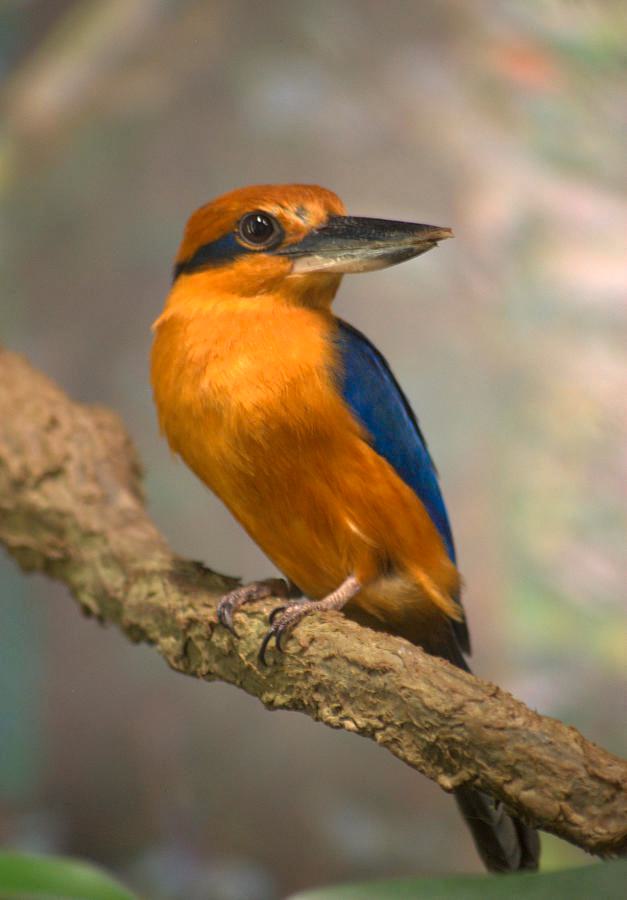
Let me start at the beginning: After the fate
that met the birds of Guam after the brown tree snake was introduced, the CNMI
government realized the threat of invasive species like the brown tree snake
could devastate their islands, too. The CNMI Division of Fish and Wildlife
enlisted the help of what would become Pacific Bird Conservation to collect a
specific amount of forest birds from targeted species and care for the birds
while they waited to be transported to other islands in the archipelago.
Since then, several conservation organizations have been doing their best to save these species. It takes a lot of hard work, flexibility, and ingenuity to work in a jungle forest where weather can be unpredictable, and the birds can sometimes be even more so. Fine mesh nets called mist nets, nearly invisible to the naked eye, are set up to catch birds as they fly from tree to tree. The birds are extracted unharmed, monitored by veterinarian staff, and then are sent to the bird care room where they are banded and given fresh food and water several times a day and checked for any signs of stress or health issues. Stressed birds are released at the field site, and birds that thrive during their stay in the bird care room are prepared for travel.
The birds are then loaded onto small ships with PBC staff and CNMI Division of Fish and Wildlife biologists, where they will continue to be cared for during the travel and then released on a specified island. The birds are studied every few years, using the bands on their legs to identify how many released birds are present and to estimate how many new birds have hatched since.
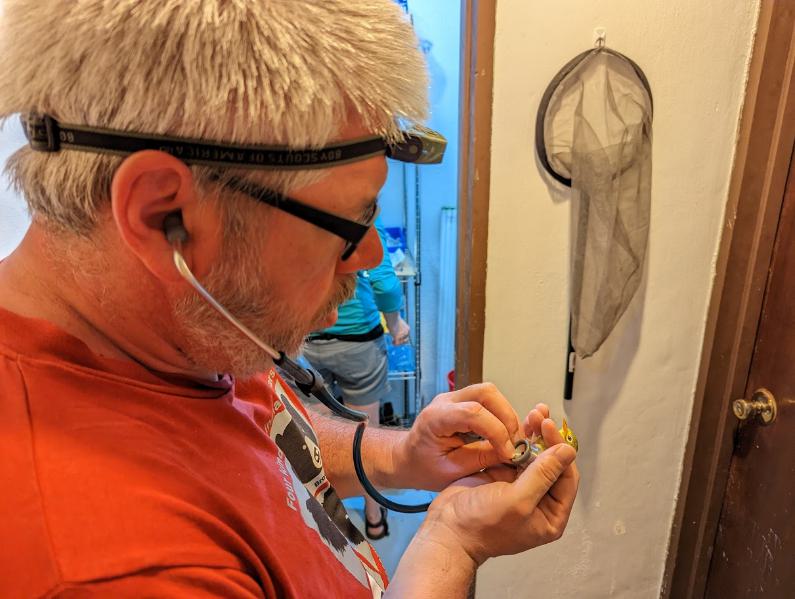
Through the Saint Louis Zoo Center for Avian Conservation in the Pacific, we are dedicated to caring for and protecting these forest birds. The Zoo’s animal care staff are experts in caring for birds from the CNMI like the Mariana fruit dove (totot) and the golden white-eye (canario), two of PBC’s target species for translocation. While the Zoo has sent animal care staff since 2004, in 2018, it sent the first dedicated educator from Saint Louis Zoo for the MAC project into the field with the team. Since 2012, PBC has been doing community outreach and education programs during the MAC field season. The Saint Louis Zoo has helped the education team grow to include an additional educator from the Saint Louis Zoo, one from the North Carolina Zoo and a dedicated program evaluator from the Saint Louis Zoo’s Conservation Audience Research and Evaluation (CARE) department.
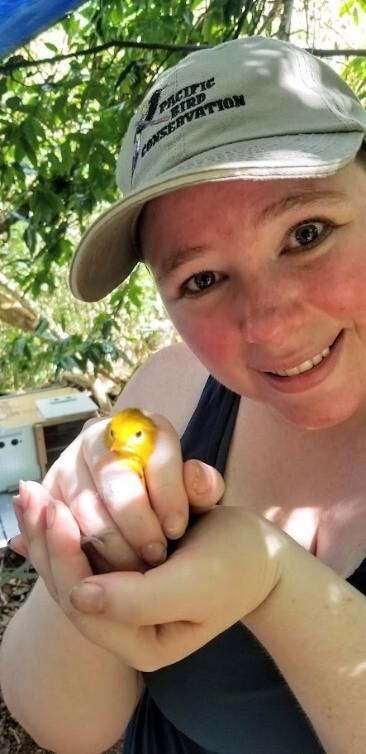
As a CARE associate, I am so grateful to be a part of the PBC’s work protecting forest birds in the Northern Marianas Islands. My role, in addition to being an extra set of hands as needed, is to be the person responsible for not only counting how many people we interact with at a library program, or how many students are in a field trip we’re facilitating, but to make observations and collect other types of data about our school programs, community touchpoints, and stakeholders' relationship-building.
I use a variety of methods like surveys, observational rubrics, sticker activities, and interviews to document the ways PBC is meeting its goals, how many people we are working with, and the results of our education and community building. This information helps build strong collaborations with our CNMI partners, like the CNMI Division of Fish and Wildlife, the Public School System, and the Mariana Islands Nature Alliance, making sure we’re building fair and relevant relationships. The data also helps us make informed decisions about how well PBC is meeting its goals and identify ways we’re succeeding and ways we can do better with our programs.
Finally, the data is included in a report to funders and is a requirement of many grants who make conservation work like PBC’s possible – proof that money was well spent and worth funding again.
I’m honored to work together with the students and residents of the Northern Mariana Islands – watching the story unfold of how PBC’s mission can grow to be as inclusive, equitable, and relevant as possible has been a career highlight. Getting to flex my field skills with these beautiful birds is just a perk! I’ve fallen completely in love with the Rufous fantail (naabak/chichirika) in particular.
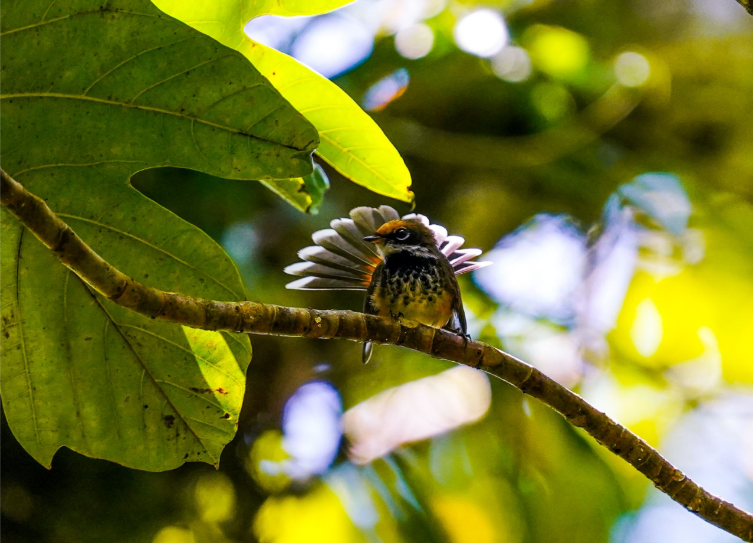
Building Strong Community
One relationship PBC has grown over the years has been with the CNMI Public School System. Through workshops and conversations with teachers, we learned that exposing high school students to conservation careers through our school programs was an important goal. To respond to this desire, PBC educator and Saint Louis Zoo education liaison Keri Lammering developed a half-day immersive experience. Students travel to the semi-remote field site where birds are collected and then hop back on the bus to the bird care room in town. Guided by PBC staff, students rotate in groups of three to learn about field techniques, engage in bird watching, how birds are kept in human care before being released to the satellite islands, and about the variety of conservation careers that are involved in this work.
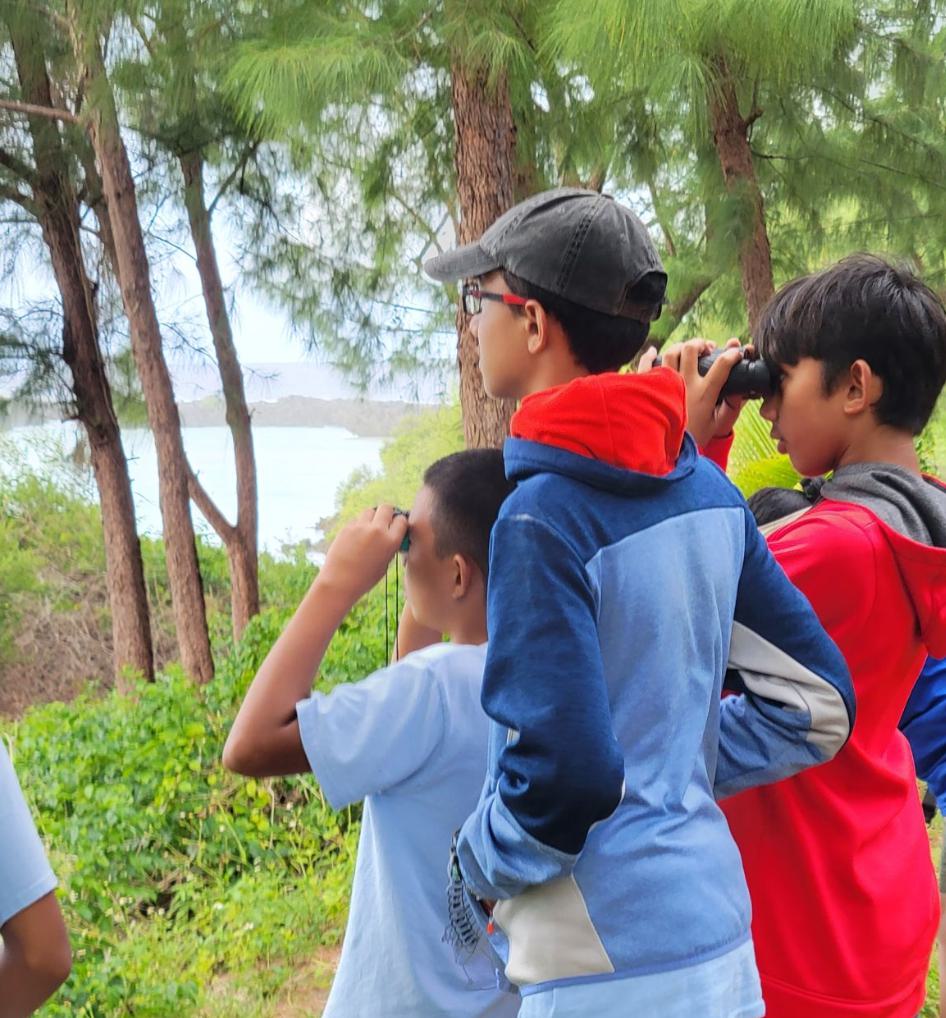
Teachers have told us how strongly they appreciate the field programs, with one teacher remarking that “Classroom visits are fine, but they are no replacement for experience in the field. Getting kids outside, learning skills and seeing it happen in real life is more important.”
To date, 225 8th-12th graders from Saipan and Rota public high schools have taken part in field trips to the bird collection and care sites in the last five years (not including 2020 and 2021 due to the Covid-19 pandemic). Students who attend the field program show an increase in interest in conservation careers from before to after their field trip, a trend we have seen each year these programs have been evaluated. Other sentiments, like a desire to be involved in bird conservation and feeling that it is important to protect birds in the CNMI, also increased after a field trip. One student said they learned “about the names of some of the birds here and I also learned that some of those birds only exist on Rota.”
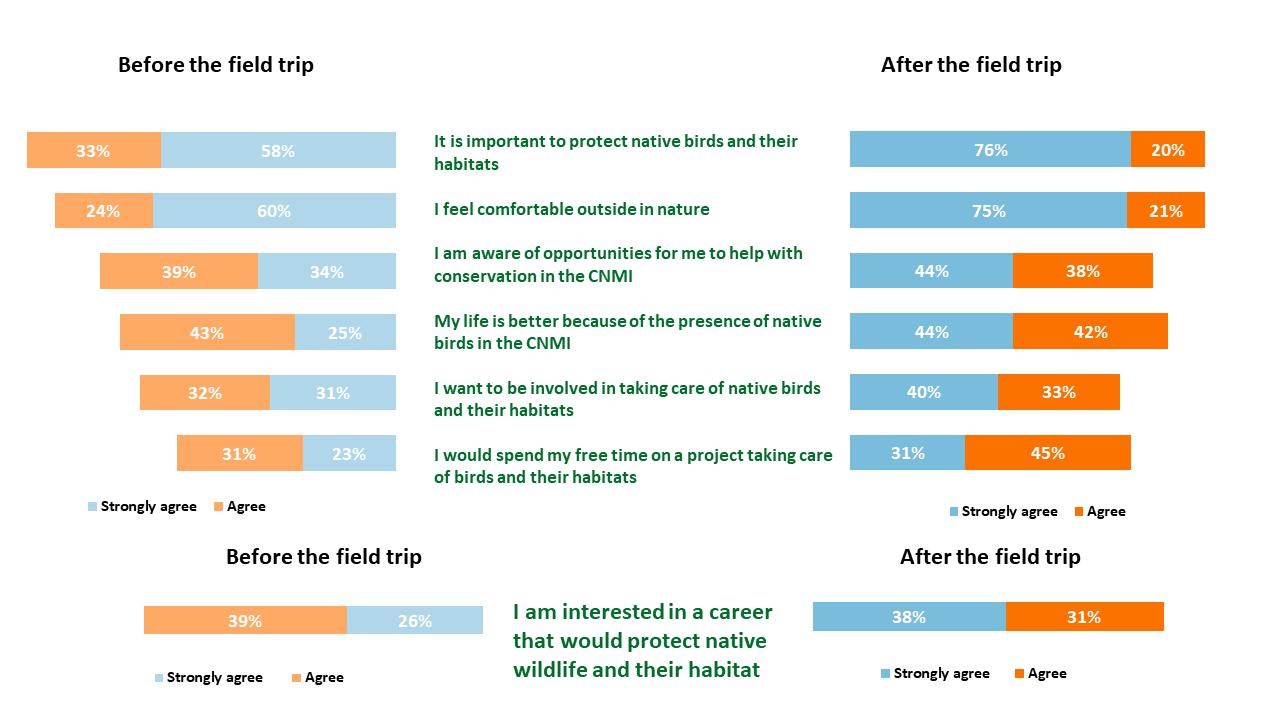
In 2023, 87% of students said that a field trip with Pacific Bird Conservation changed their perception of scientists or conservation careers. One student said that “I thought scientists do math and space but they help animals and people live and study their populations.”
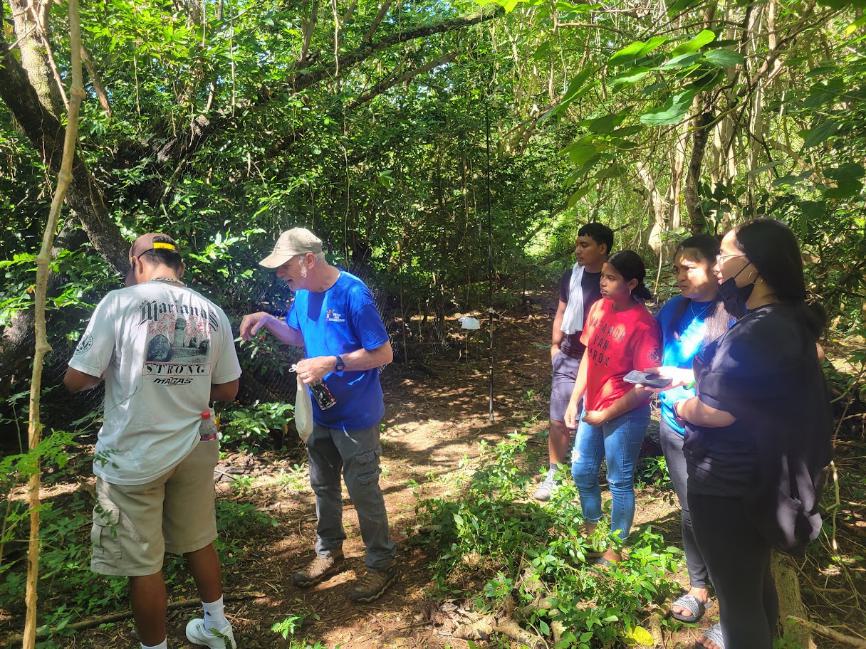
Overall, PBC has engaged with over 1,300 students and other CNMI community members through intentional programs since 2018. Through field trips, classroom programs, micro-internships, festivals and expositions, library programs, and teacher workshops on Saipan, Tinian, and Rota, PBC and our partners are supporting avenues for Marianas residents to connect with their birds. John Bender, PBC staff biologist/Whitney R. Harris and Saint Louis Zoo fellow, also presented PBC’s field and outreach work to a community of local and global conservationists at the University of Guam in February of 2023.
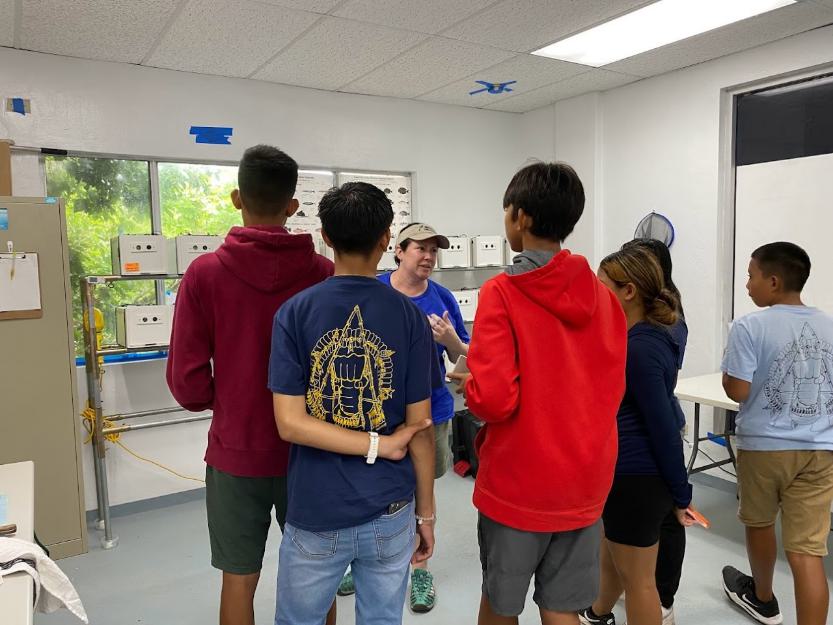
Building on the strong culture of conservation already present within the CNMI, PBC and the Saint Louis Zoo is proud to partner with local community-based conservation organization, Mariana Islands Nature Alliance. Our plans are to reach more community members and get more students and aspiring conservationists involved with field and outreach work through their Tasi-Watch Ranger program.
PBC is supporting the capacity for conservation work by and for the people who live in the CNMI. We envision these opportunities growing as we continue building on school programs with the Public School System. Through these programs, students learn about internships and other opportunities within these partnerships that get them involved with PBC’s work and in the field.
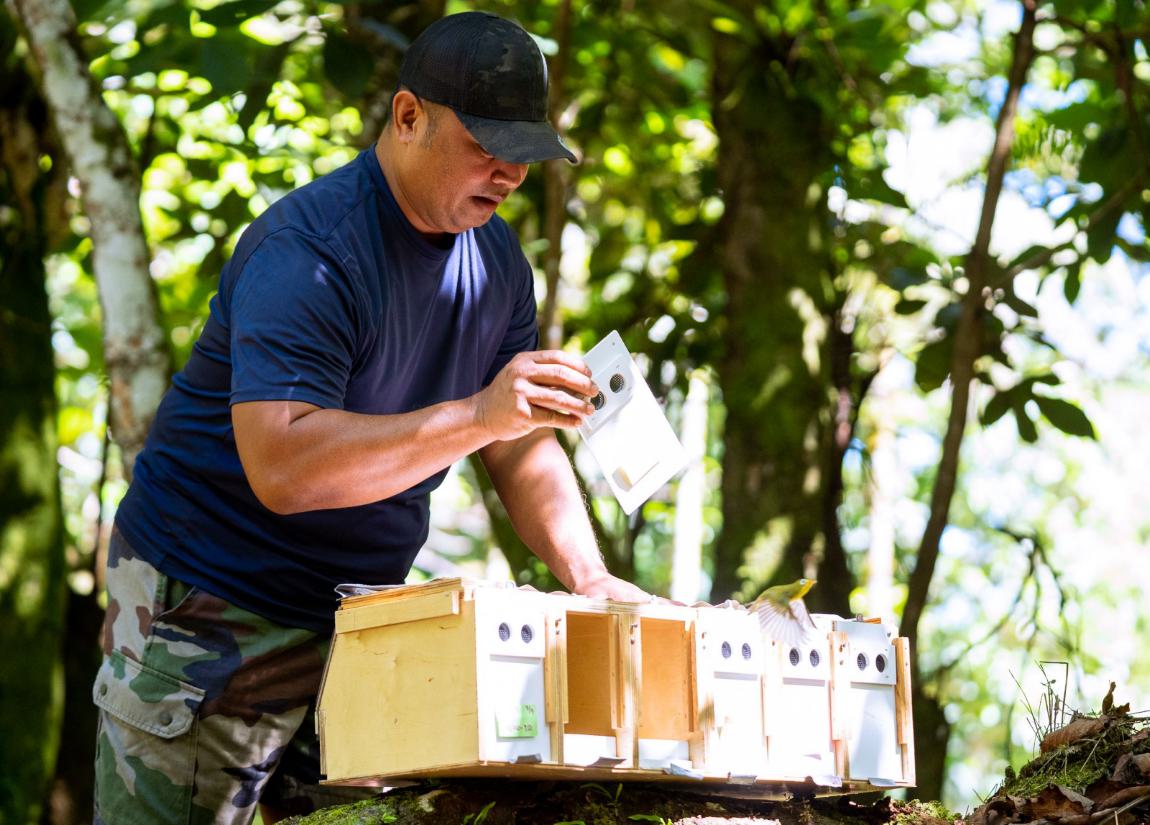
The Saint Louis Zoo and Pacific Bird Conservation knows that communities, organizations, and experts coming together build the strongest conservation plans. You support the Center for Avian Conservation in the Pacific and PBC, too, whenever you visit the Saint Louis Zoo. It is important to remember that we are lucky to have so many unique birds in St. Louis.
Want to do more for birds and other wildlife? Check out the Saint Louis Zoo’s ideas for DIY conservation and AZA’s Songbird SAFE program - what other ideas do you have that could help birds in your own community?
From the CNMI, to all the partnering zoos who
support PBC, to our St. Louis community who supports the Zoo’s dedication to
conserving species – we are stronger working together!

